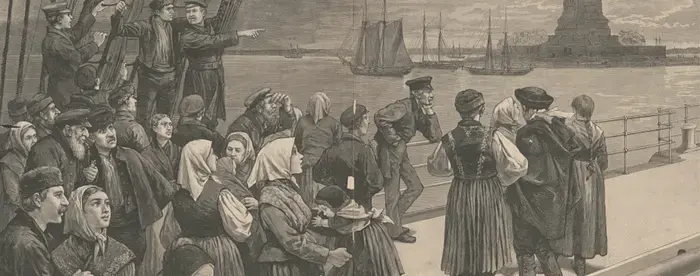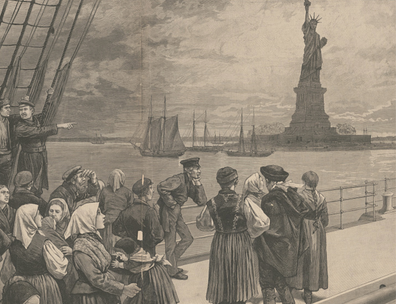Teaching Civics through History
In this unit, students will learn about changing immigration policies as well as the experiences and contributions of immigrants to the United States.
Image Source: “Welcome to the Land of Freedom,” in Frank Leslie’s Illustrated Newspaper, July 2, 1887 (Library of Congress)


